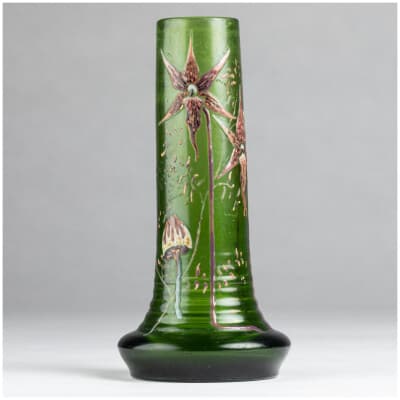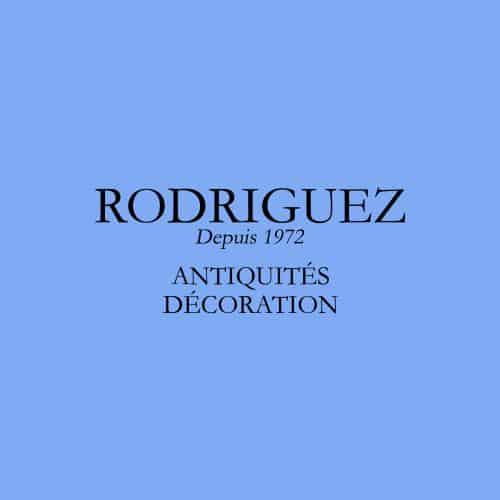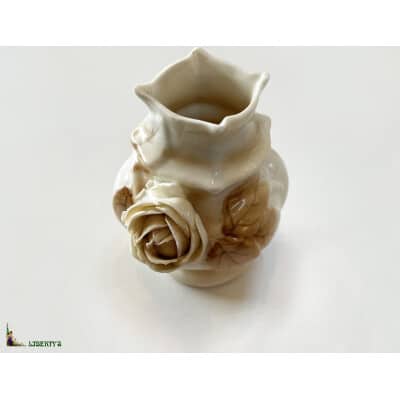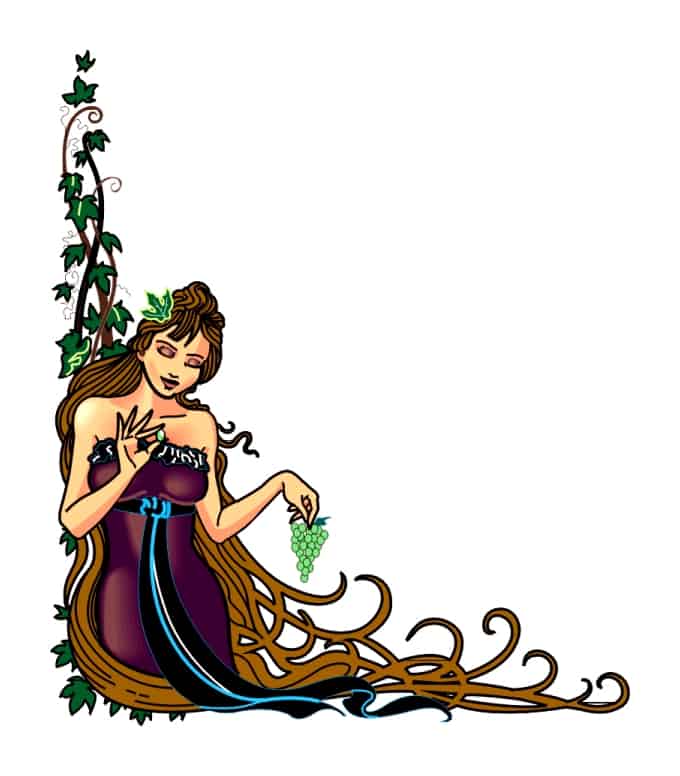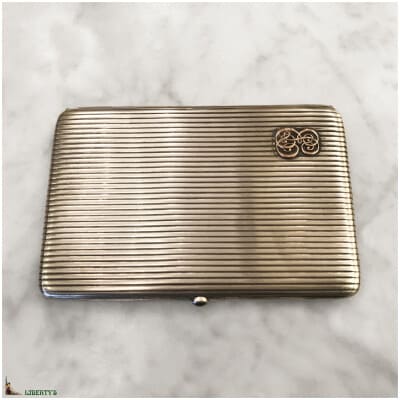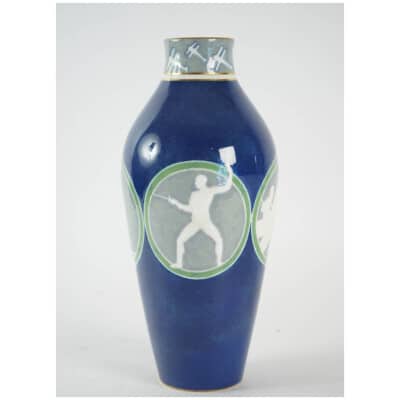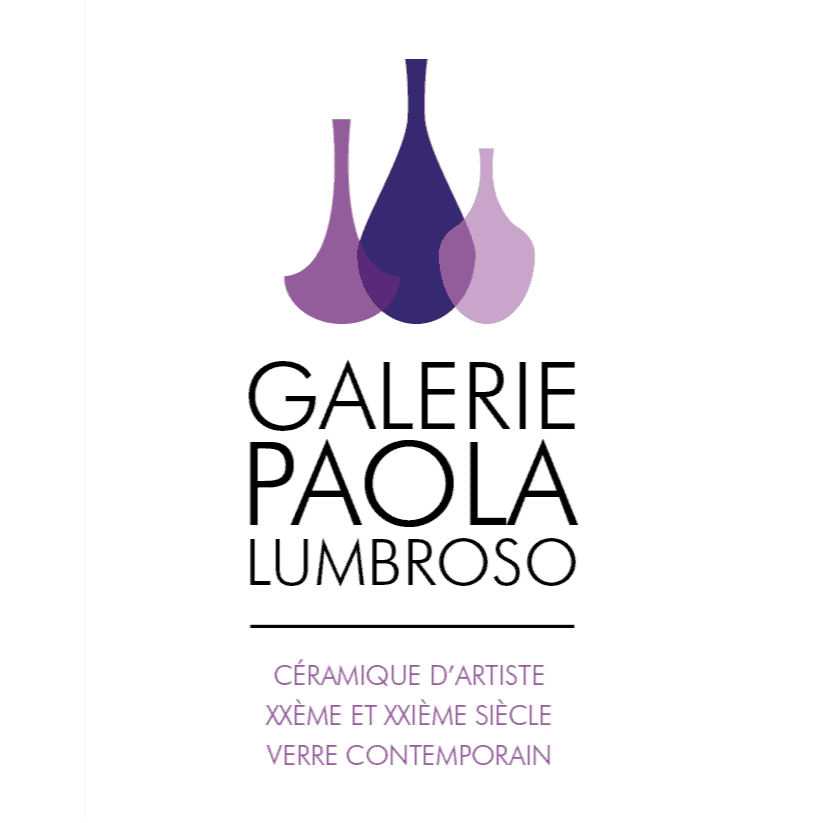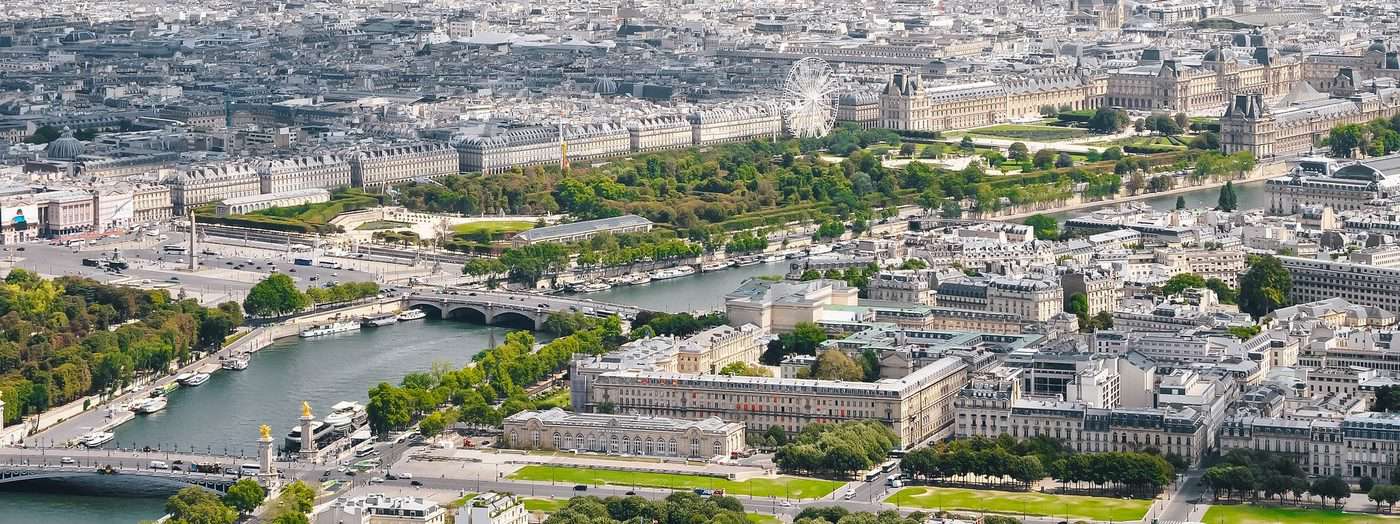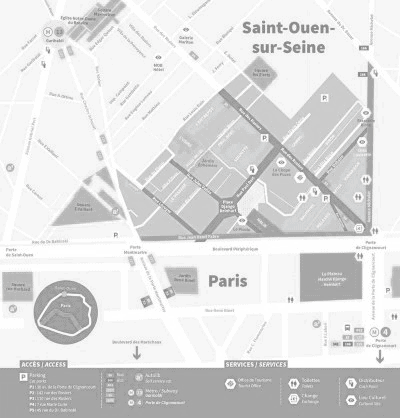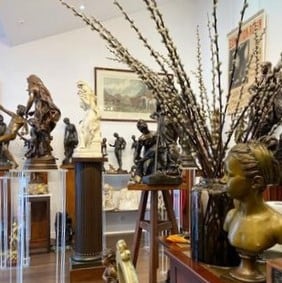
CaTaLogUE Des PucEs
Sculpture – Chien Tenant Un Lièvre Dans La Gueule , Ferdinand Pautrot (1832 – 1874) – Bronze
Disponibilité :
EN STOCK€1.700,00
Épreuve en bronze à patine brune , représentant un chien de race braque tenant un lièvre dans la gueule , par Ferdinand Pautrot (1832-1874).
Le chien est représenté assis , tenant fièrement son lièvre synonyme de trophée .
Le style de Ferdinand Pautrot est particulièrement reconnaissable , dans la précision qu’il porte aux détails de ses sujets animaliers .
Signature du sculpteur “F.PAUTROT” , en creux sur la terrasse naturaliste .
Sculpture d’édition ancienne , période seconde partie du XIX ème siècle .
Très bon état de conservation et de patine .
Dimensions : 21 cm x 16.2 cm
Bronze proof with brown patina, representing a braque dog holding a hare in its mouth , by Ferdinand Pautrot (1832-1874).
The dog is shown seated , proudly holding its hare synonymous with a trophy .
Ferdinand Pautrot’s style is particularly recognizable in the precision he brings to the details of his animal subjects .
Sculptor’s signature “F.PAUTROT” on the naturalistic terrace .
Sculpture of old edition , period second part of the XIX ème century .
Very good condition and patina .
Dimensions : 21 cm x 16.2 cm

Ferdinand Pautrot (1832 – 1874)
Ferdinand Pautrot , est un sculpteur animalier français , né à Poitiers , en 1832 .
Il est spécialisé dans les représentations cynégétiques , notamment de chiens et d’oiseaux .
Les œuvres de F.Pautrot sont marquées par un réalisme saisissant .
Ferdinand Pautrot , fait preuve de clarté et de netteté à travers ses oeuvres , il reste fidèle à la tradition animalière de son époque .
La précision de son travail , apparente dans la qualité du moulage , des détails et des finitions , ainsi que sa passion évidente pour son sujet , font de lui un des meilleurs sculpteurs animaliers , de la seconde partie du XIX ème siècle .
Ferdinand Pautrot expose au Salon de 1861 à 1870 .
Il y expose majoritairement des sculptures de chiens de chasse , d’oiseaux et de chevaux …
Ses modèles ont séduit le public au milieu du XIXe siècle , en particulier les amateurs de sports champêtres , comme la chasse et l’équitation .
Bien que , Ferdinand Pautrot n’était pas un pionnier sur le plan stylistique , il est considéré comme l’un des plus grands sculpteurs de l’époque , au même titre que Pierre-Jules Mêne et Jules Moigniez .
Les œuvres de Ferdinand Pautrot se trouvent dans de nombreuses collections publiques et privées à travers le monde .
Certains de ses travaux sont visibles dans des Musées prestigieux , notamment le Musée d’Orsay à Paris .
Ferdinand Pautrot (1832 – 1874)
Ferdinand Pautrot was a French animal sculptor born in Poitiers in 1832.
He specialised in hunting representations , particularly of dogs and birds .
Pautrot’s works are marked by a striking realism .
Ferdinand Pautrot demonstrates clarity and neatness in his work , remaining faithful to the animal tradition of his time .
The precision of his work , apparent in the quality of the moulding , the details and the finishes , as well as his obvious passion for his subject , make him one of the best animal sculptors of the second half of the 19th century .
Ferdinand Pautrot exhibited at the Salon from 1861 to 1870 .
He mainly exhibited sculptures of hunting dogs, birds and horses …
His models appealed to the public in the middle of the 19th century , particularly lovers of country sports such as hunting and horse-riding .
Although Ferdinand Pautrot was not a stylistic pioneer , he is considered to be one of the greatest sculptors of his time , on a par with Pierre-Jules Mene and Jules Moigniez .
Ferdinand Pautrot’s works can be found in numerous public and private collections around the world .
Some of his works can be seen in prestigious museums , including the Orsay Museum in Paris .
Disponibilité :
EN STOCK| Lieux | |
|---|---|
| Siècle | |
| Style | |
| Type d'Objet |
Questions et demandes générales
Il n'y a pas encore de demandes de renseignements.
Partagez cette fiche :
Produits similaires
-
Objets de Collections
Emile Gallé (1846-1904), vase fuselé en verre à décors d’orchidées et de champignons, XIXe
€2.400,00 -
-
Objets de Collections
Porte-cigarettes argent monogrammé or avec fermoir saphir, larg. 12.5 cm (Deb. XXe)
€480,00 -
Céramique
Vase en porcelaine de Sèvres
